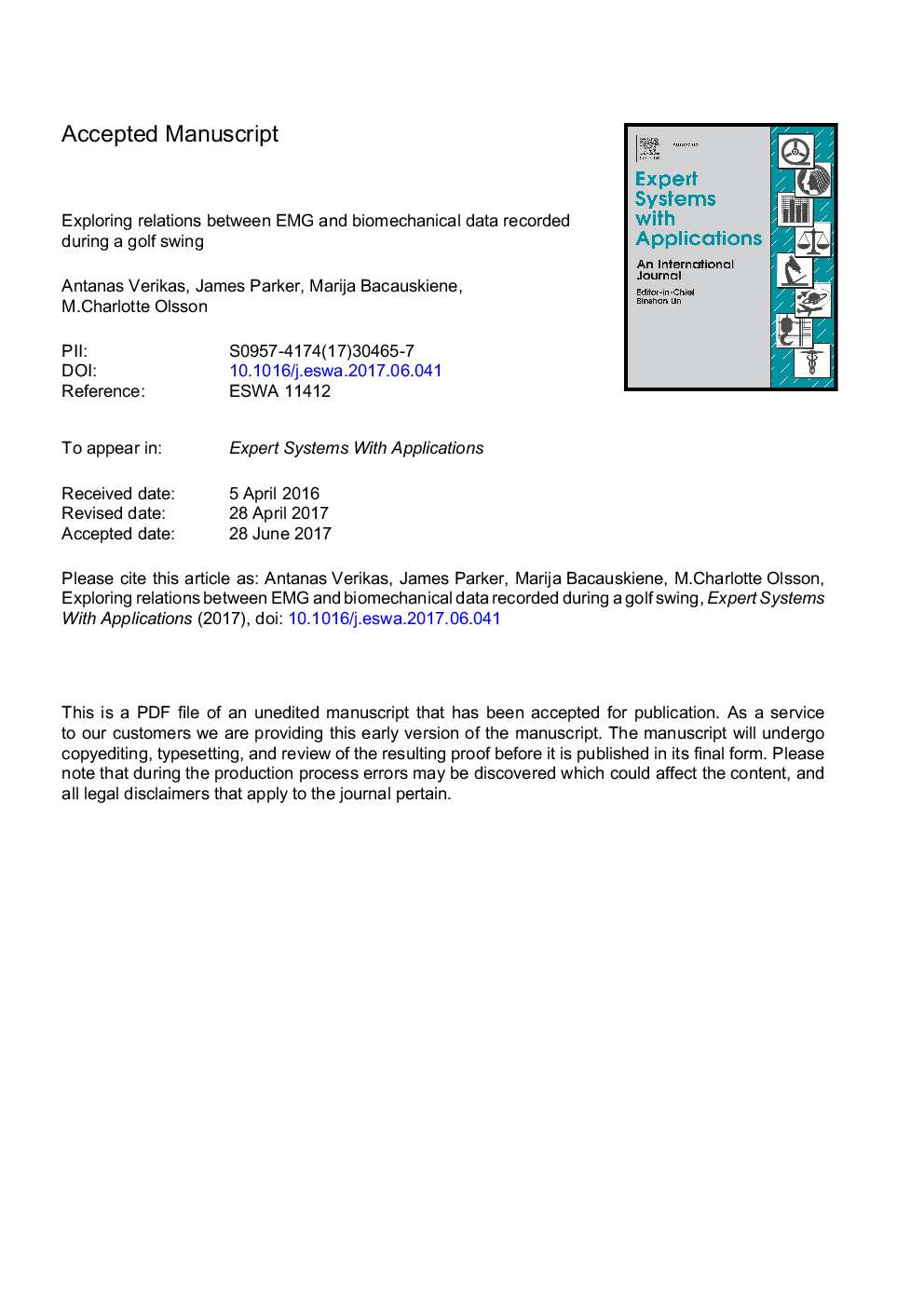| Article ID | Journal | Published Year | Pages | File Type |
|---|---|---|---|---|
| 4943275 | Expert Systems with Applications | 2017 | 27 Pages |
Abstract
The experimental investigations using data from 16 golfers revealed statistically significant relations between sets of input and output variables. A strong direct linear relation was observed between linear combinations of EMG averages and peak rotational speeds. The coefficient of determination values R2=0.958 and R2=0.943 obtained on unseen data by the random forest models designed to predict peak rotational speed of thorax and pelvis, indicate high modelling accuracy. However, predictions of peak rotational speed of arm were less accurate. This was expected, since peak rotational speed of arm played a minor role in the linear combination of peak speeds. The most important muscles to predict peak rotational speed of the body parts were identified. The investigations have shown that the canonical correlation analysis is a promising tool for studying relations between sets of biomechanical and EMG data. Better understanding of these relations will lead to guidelines concerning muscle engagement and coordination of thorax, pelvis and arms during a golf swing and will help golf coaches in providing substantiated advices.
Related Topics
Physical Sciences and Engineering
Computer Science
Artificial Intelligence
Authors
Antanas Verikas, James Parker, Marija Bacauskiene, M. Charlotte Olsson,
